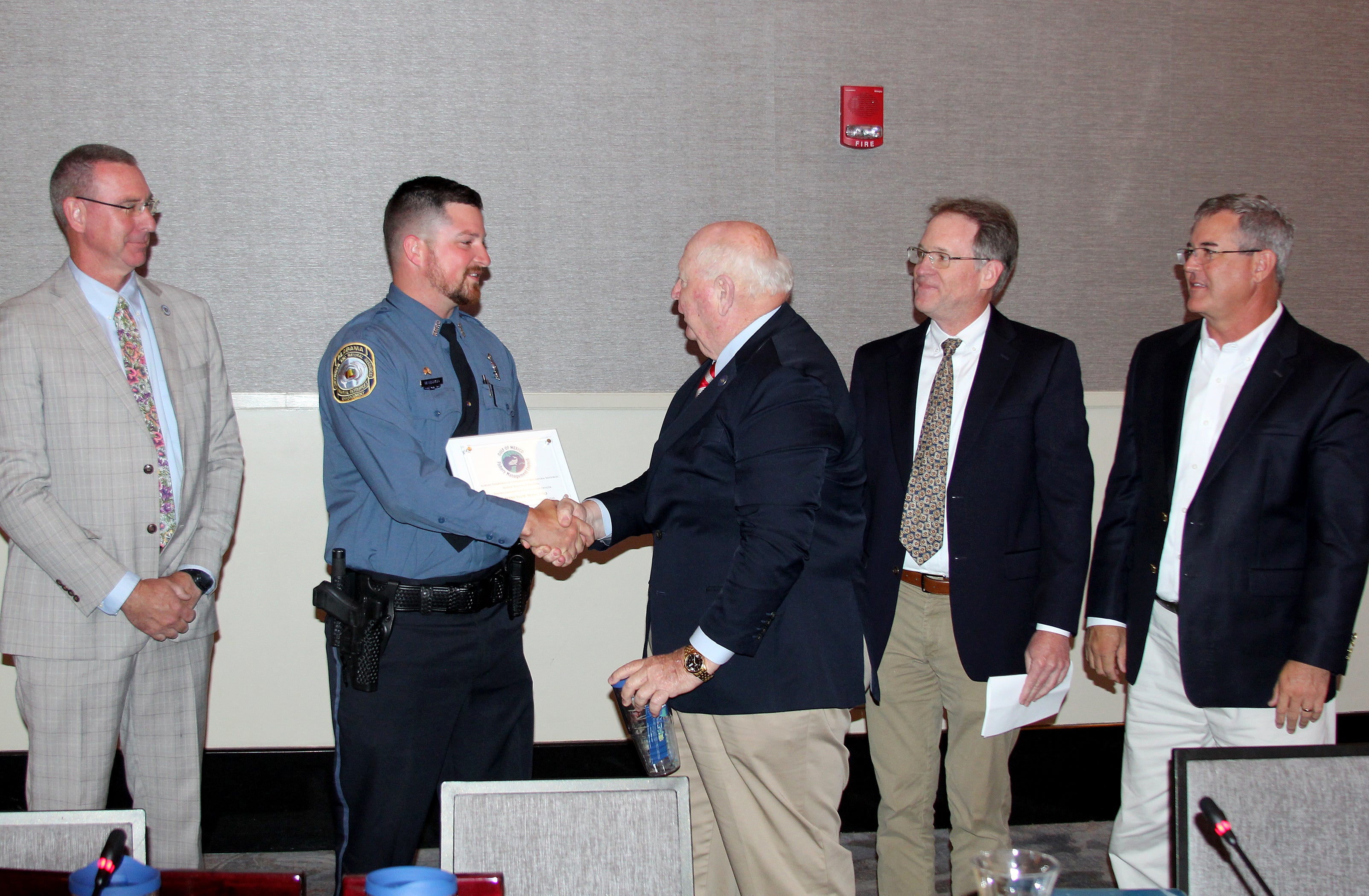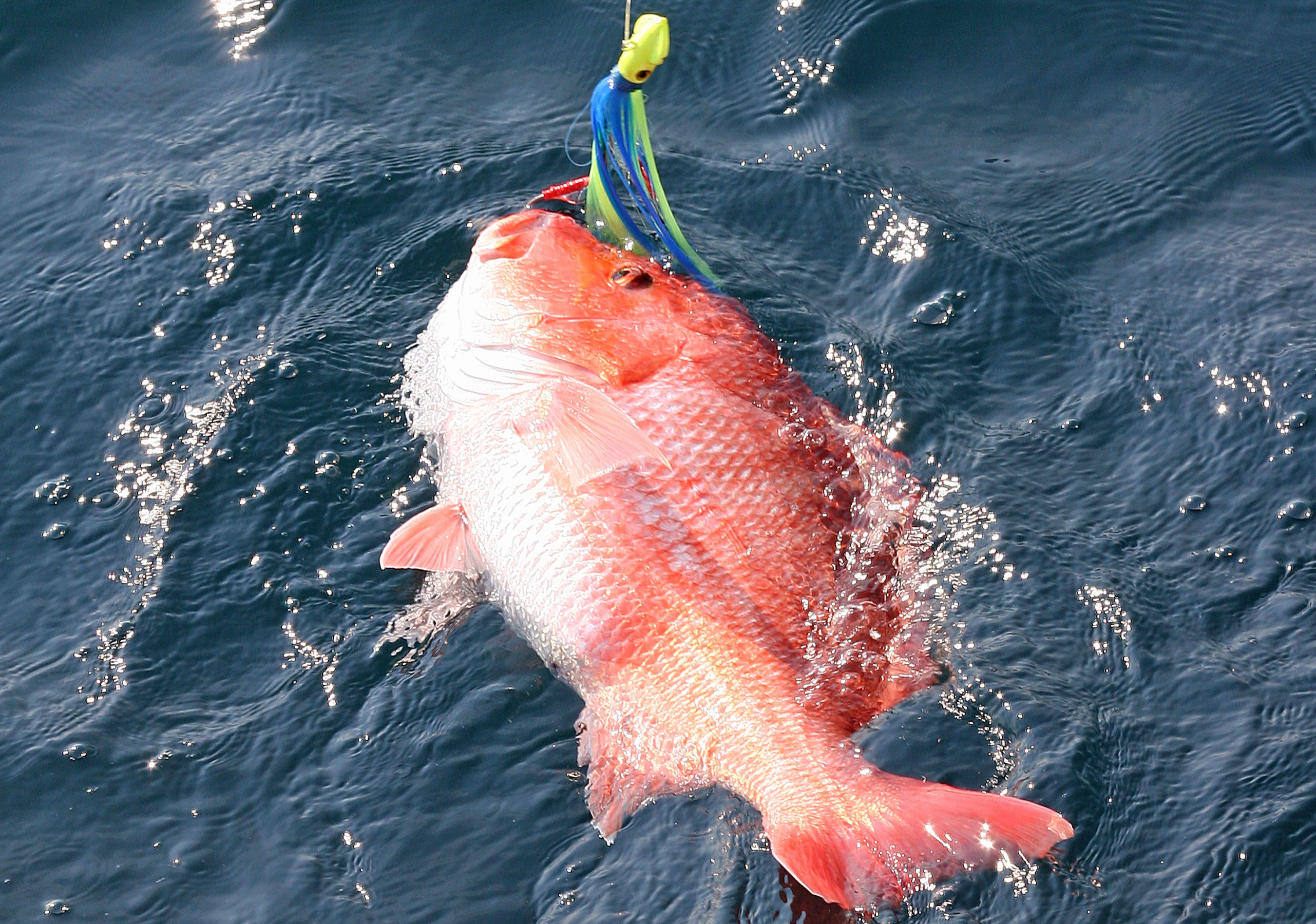By DAVID RAINER, Alabama Department of Conservation and Natural Resources
For an inspiring example of starting at the bottom and working your way up, look no further than Chancelor (Chance) Mancuso of the Alabama Department of Conservation and Natural Resources’ (ADCNR) Marine Resources Division (MRD).
Mancuso’s humble beginning with MRD was on a part-time basis as a laborer, and, within five years, he was honored as the 2022 Gulf of Mexico Fishery Management Council Officer of the Year at last week’s Council meeting in Mobile.
“I got hired in January 2017 as a part-time laborer,” Mancuso said. “After about four or five months, I became a full-time laborer for about a year. During that time, I was able to go on patrol with several of the officers to feel it out to know that’s what I wanted to do.”
In June 2018, he was offered a Conservation Enforcement Officer (CEO) position with MRD and steadily proved his worth. As with other MRD officers, Mancuso’s duties include enforcing state and federal fisheries laws and regulations in Alabama state waters and federal waters of the EEZ (Exclusive Economic Zone). He conducts boardings at land and sea to inspect gear and catch, as well as participating in outreach events to educate the public on current state and federal fisheries regulations.
Although it took a while for Mancuso to gain the enforcement position, he remembers an interaction when he was growing up in Fort Payne, Alabama, that made an impact on his future.
“Back when I was younger, I ran into a game warden at Walmart,” he said. “Everything just kind of clicked. It seemed like something I wanted to do. I have a passion for the outdoors, doing whatever I can for conservation and protecting that for future generations.”
Mancuso headed to the Alabama Gulf Coast right out of high school to play baseball at Faulkner State Community College, now a part of Coastal Alabama Community College. He then went to the University of South Alabama and earned a degree in criminal justice with a minor in biology.
“I love it down here,” he said. “After I graduated from South, it was just one of those crazy opportunities. I stumbled upon this opening. It turned out to be the best decision I ever made. It’s been wonderful.”
When he got the CEO job, Mancuso was “low man on the totem pole” for two years.
“Everybody I worked with had a whole lot more seniority, so I had to show everybody I was willing to work hard,” he said. “I made sure I was up on the regulations. My fellow officers used to question me on those to make sure I was up to date. They helped me out a lot. They helped me get to where I am today because they cared.
“And this award is awesome. I’m really grateful to the Gulf Council. But this is not just about me. It’s about my fellow officers as well. We work together so well. This award wouldn’t have been possible if it wasn’t for them.”
During 2022, Mancuso worked 296 hours of patrol under the NOAA Fisheries’ joint enforcement agreement. On those patrols, he was involved in 208 state and/or federal cases. Mancuso also worked multiple TED (turtle excluder devices) details with NOAA as well as worked 10 Marine Mammal Protection patrols in 2022.
In one of the bigger cases he made, a subject was found with 42 undersize greater amberjacks. He also caught one of our federal gill net fishermen with illegal species on board.








